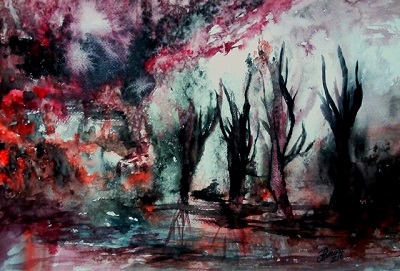
By Ramona Wadi
The initial idea for a series of paintings related to Palestine occurred after finishing “The narration of burnt olive trees”, which is the first in the series themed “Impressions of Palestinian memory in watercolor.”
However, it is the last painting which I believe defines this collection, or contribution, as a writer and artist, to Palestinian memory. In a political context, “Spirit of Return” may seem impossible due to the international community’s involvement in protecting the Israeli colonial entity on Palestinian territory. Yet, it is also the refusal to recognize the Palestinian right to land and reclamation which led to the people’s tenacious dream of return and therefore propels the concept to a permanent relevance.
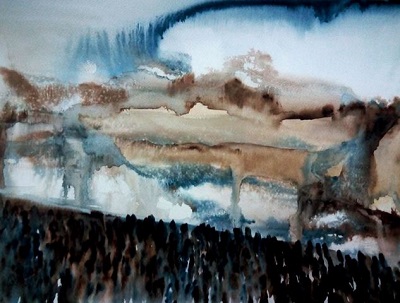
One of the questions I was asked when finalizing the paintings was if there is a connection between the writer and the artist. It depends on context, which might also be influenced by awareness depending on circumstances. Where writing has yet failed to communicate, art provides the necessary sentience.
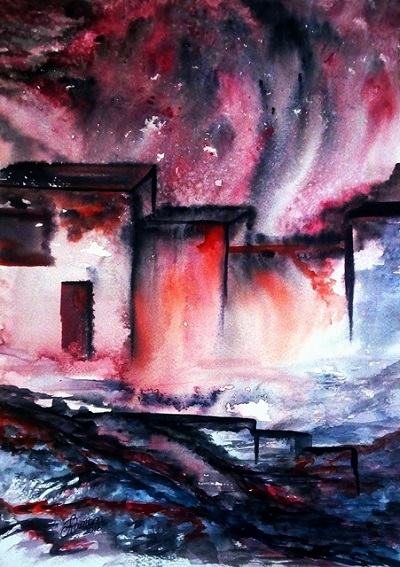
My preference for landscapes, skies and semi-abstract art – all of which are evident in this collection may, in other paintings, serve to communicate the beautiful wonder of creation – a sense of merging with a particular ambiance, emotion or metaphor. If language encounters limitations, watercolor provides an avenue for expression which encapsulates both silence and assertion.
In the case of Palestine, writing and art enrich each other. Palestinian collective memory has many facets which are in danger of being confined to the usual visible icons, or else, generalized to produce interminable reports which serve a very temporary purpose.
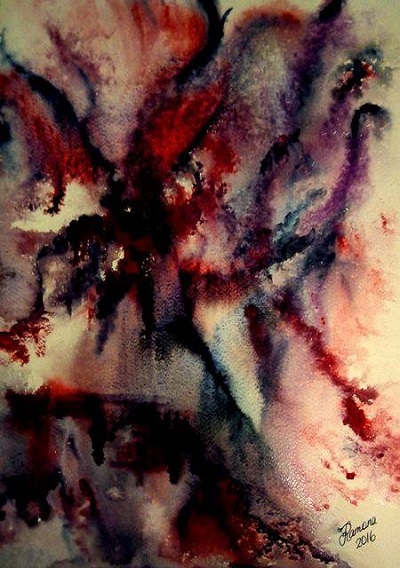
These trends have the tendency to overlook the most important components of Palestine – the land and the people – to the point that history runs the risk of being ostracized from the present colonial reality. Israel’s destruction of documented Palestinian collective memory is another facet of the Nakba, giving rise to more urgency to reconstruct and preserve the Palestinian experience into a narrative which can communicate with the rest of the world.
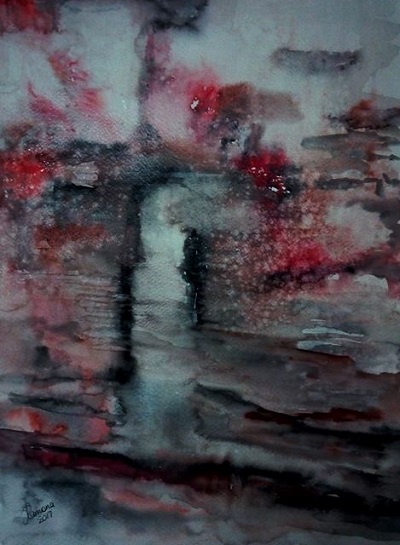
As an artist, the challenge to contribute to Palestinian memory, in my case, had to be approached from both knowledge and the people’s experience of Palestine. The key word in this watercolor collection is “impressions”. I have tried to impart slivers of what Palestinians have expressed or depicted – through testimonies, history, memory and photography.
“Jaffa’s Disappeared” might be considered a deviation from the process which determined the rest of the paintings. The discovery of the mass graves in 2013 – linked to disappearances of Palestinians in the uprising of 1936 and the Nakba of 1948 – is akin to a lingering question.
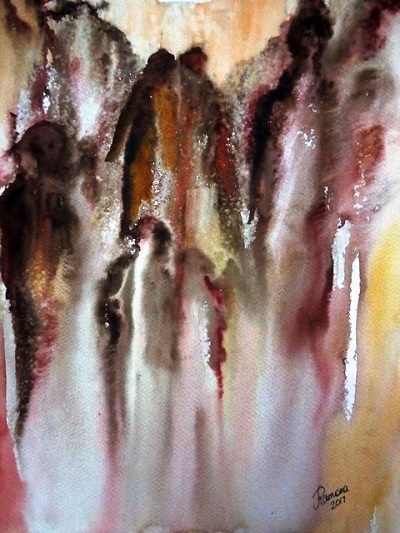
The massacres were documented, yet the disappearances rarely mentioned. Perhaps the art seeks to restore the question to public consciousness and establish a platform for the disappeared, instead of acquiescing to a vacuum in which their memory is also far removed from history and the present.
Away from the massacres, yet still intertwined within Palestinian history, is the painting “Rain in Abu Dis”, inspired by Rima Najjar’s photography of the place during her tenure as Professor of English Literature at Al-Quds University. It combines one of my favorite natural elements – rain; and the character of this village which I became familiar with through Rima, as she posted photos regularly on Facebook which captured the essence of the land and the people.
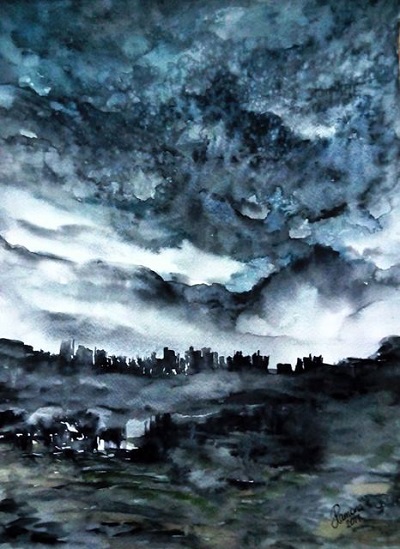
It is possible that this collection will increase – there are other impressions which might manifest themselves in watercolor. The initial painting I discussed, “Spirit of Return”, can also be seen as a prediction of further expression. In a way, it is similar to fulfilling an inscription, regardless of itineraries and time.
– Ramona Wadi is an accomplished writer and an artist. She contributed this article to PalesineChronicle.com.





I think that Ramona has really captured the history and persecution of the Palestinian people, their love for their country and their right to return! These paintings stir many feelings in my heart, mainly of sorrow but also of pride in the strength Palestinian people in general show through their many daily tribulations! A big well done to Ramona Wadi for this beautiful set of paintings, would love to own the whole set!
Watercolour is not the medium of Ramona’s paintings.. they look like her brushes have been dipped in Palestine’s tears.
Impressive paintings of a history of oppression and struggle of a people who have been colonised but whose spirit is free as Palestine one day will be. Brava Ramona, exceptional talent!
These are so eloquent and I love your painting style too. I am ‘sharing’ them on Facebook.